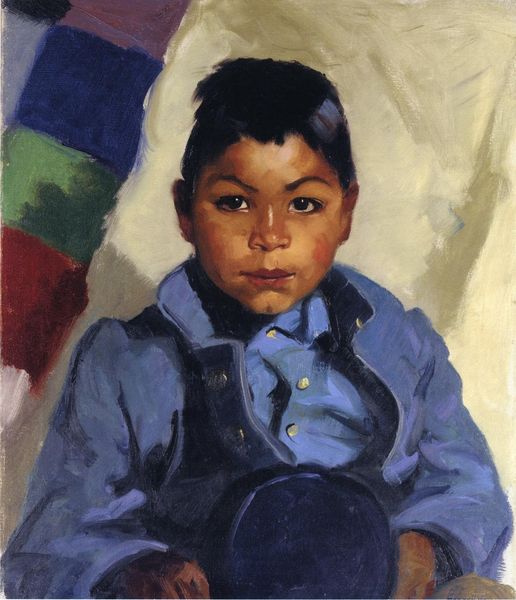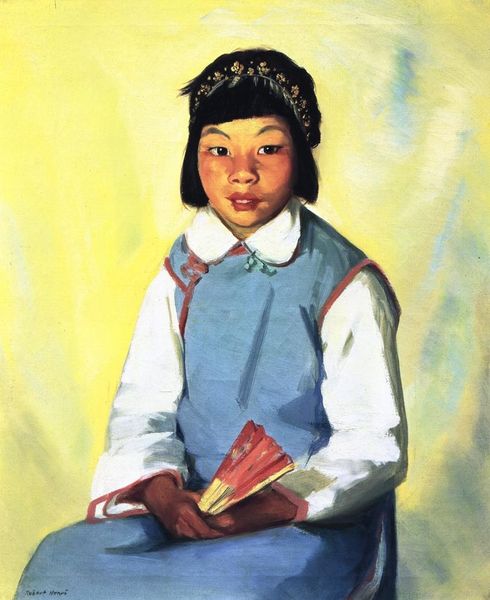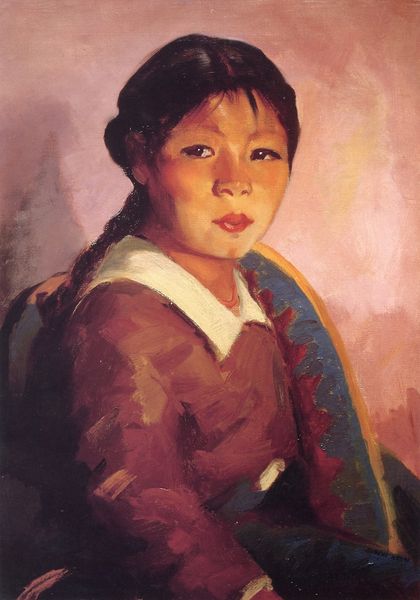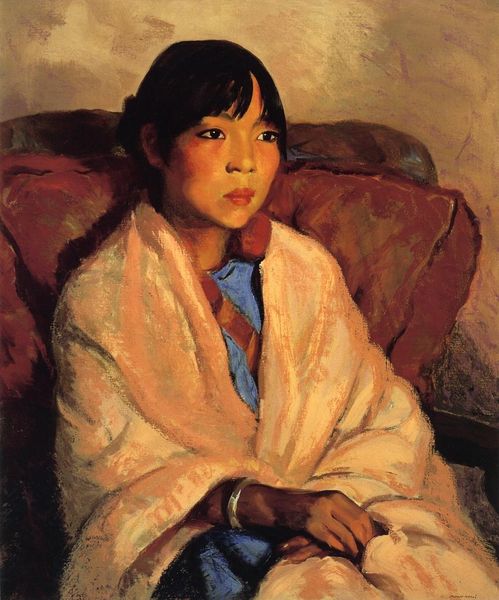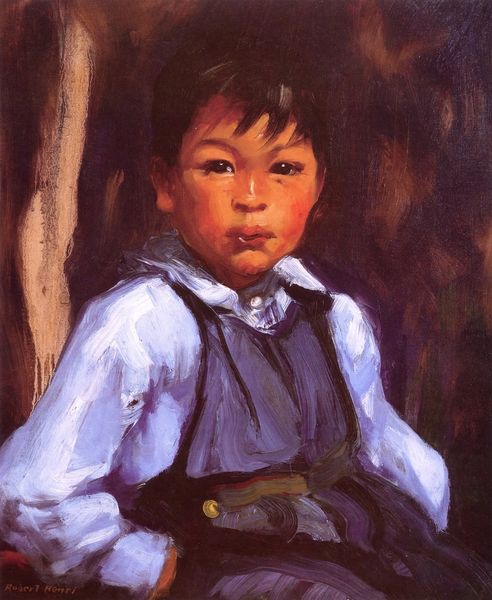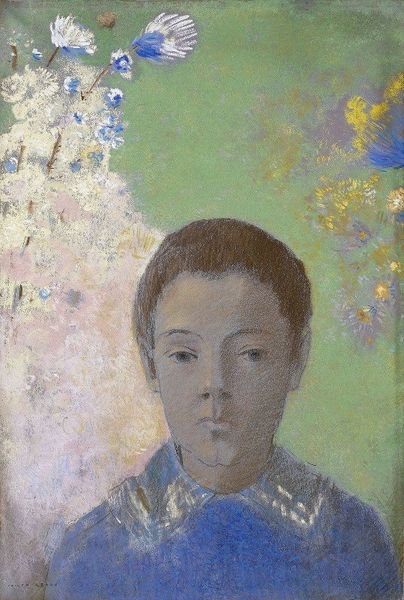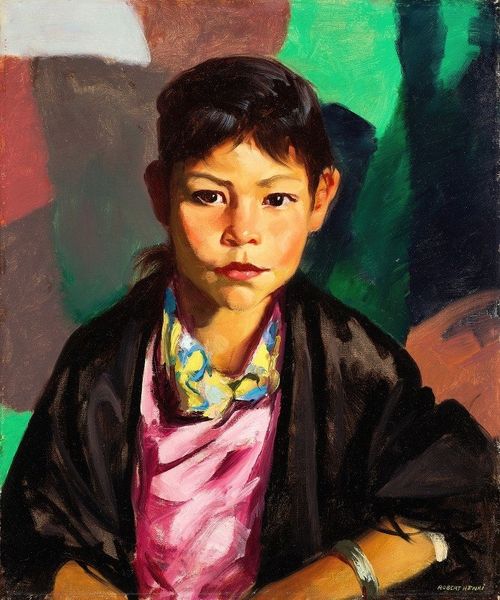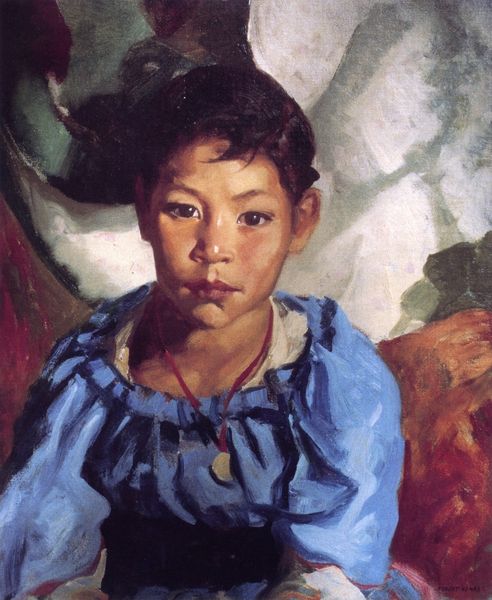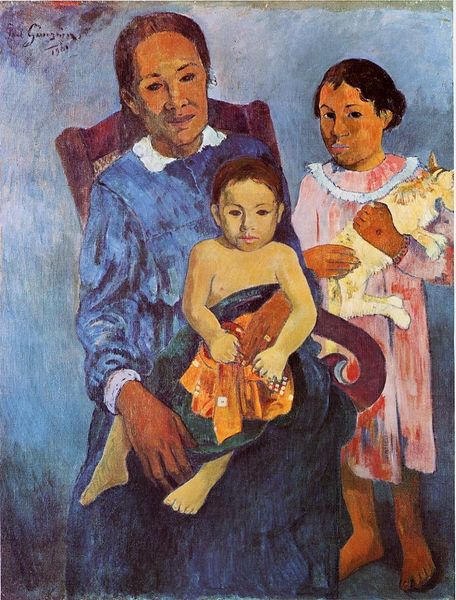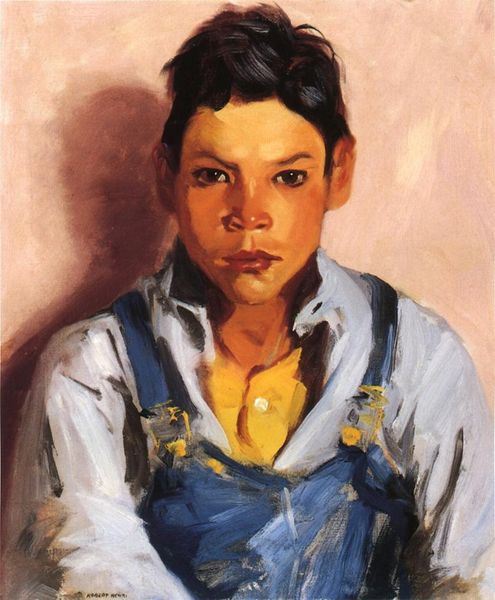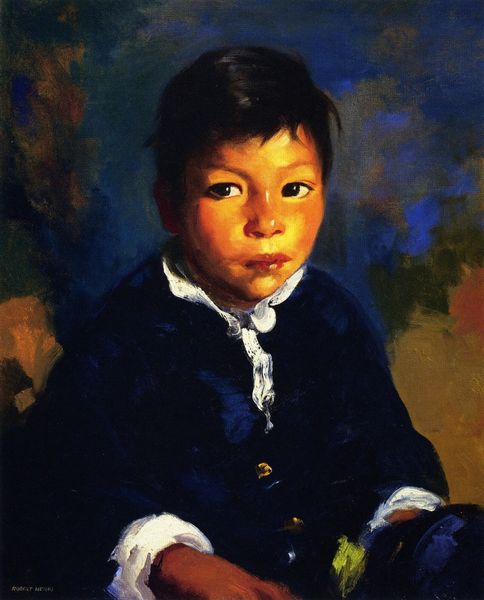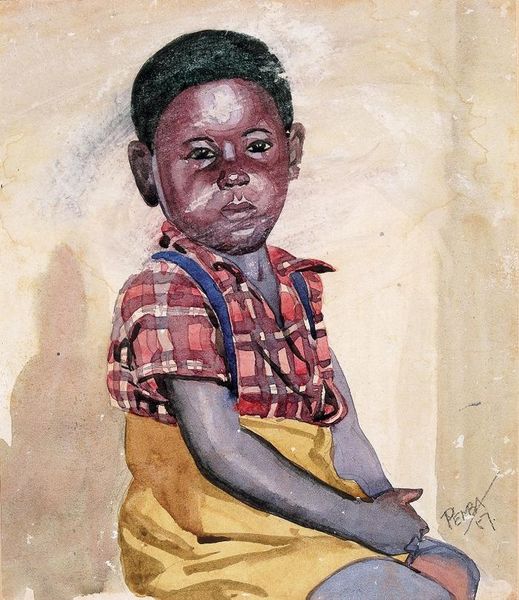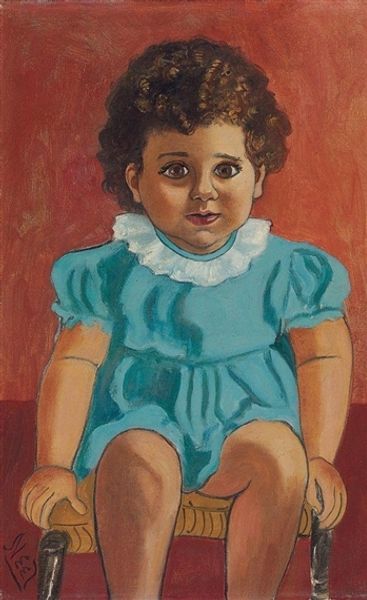
oil-paint
#
oil-paint
#
figuration
#
oil painting
#
portrait drawing
#
modernism
#
realism
Copyright: Alberto da Veiga Guignard,Fair Use
Curator: Let’s turn our attention to “Menino,” a 1935 oil painting by Alberto da Veiga Guignard. Editor: Immediately, I’m struck by the child’s intense gaze and the strangely formal pose, given his youth. The backdrop seems dreamlike and unreal. Curator: Indeed. Guignard was known for infusing his portraits with a certain emotional ambiguity, almost a psychological depth. The child’s direct stare is unnerving but captivating, suggesting an old soul. Perhaps the child represents purity confronted by harsh realities. Editor: Or maybe, looking at it materially, we’re seeing the constraints of early 20th-century portraiture, even in Brazil. The clothing seems stiff and almost manufactured-looking despite the soft handling of paint in the skin and the mountain backdrop. The very process of sitting for a portrait, being still, could evoke that kind of melancholic composure. How might the artist have constructed such a melancholic persona, and out of which materials and labor conditions was it made possible? Curator: It’s intriguing to consider how artistic styles and societal norms coalesce to shape the portrait’s symbolism. Guignard was very attuned to these nuances, weaving together Modernist sensibilities with his interest in Realism. Note the presence of the distant mountains and sky outside of the curtained windows behind the child's head. Editor: It's that combination of natural and manufactured elements that arrests my attention, right from the window out to those distant mountains, to the boy's expressionless expression. His clothes have obviously been produced somewhere, but his interior, expressed so blandly, can be understood as one or another landscape as well. Curator: Ultimately, Guignard invites us to contemplate innocence, experience, and the myriad forces that shape our identities. He gives his sitter an emblematic timelessness. Editor: Agreed. And examining his process— the application of the oil, the considered arrangement of light and texture — reveals the human labor behind this manufactured, complex image. Curator: That offers so much for us to ponder about identity, the artistic process, and cultural representation.
Comments
No comments
Be the first to comment and join the conversation on the ultimate creative platform.
